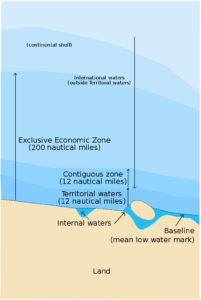It’s not surprising if you’ve never heard of Niue, since this tiny island nation in the Pacific is home to only around 1,600 people. Last week it made headlines, however, when officials announced that they will convert 40 percent of its commercial zone — 49,000 square miles of water — into a marine park.
Chile joined the party by announcing two new marine parks of its own. The two new MPAs will cover roughly 290,000 square miles, more area than the entire state of Texas.
Marine protection in Niue
As a large country, Chile has considerable bodies of water under its control, large enough to create vast marine sanctuaries. But what about Niue? The country’s new marine parks represent more than 30 square miles per man, woman, and child in the nation.
The answer comes from the UN’s Law of the Sea. According to this treaty, countries with coastal regions have rights over their water based on distance from shore. The treaty considers anything within 12 nautical miles from the coast as national waters and sovereign territory of the country. Each country can enforce its laws and has rights to decide who can and cannot venture into their waters. Beyond 12 nautical miles is the exclusive economic zone, where a country has rights over the resources in the water and below the ocean floor. This includes fishing, mining of natural resources, and regulation of pollution of  these waters. Exclusive economic zones are key in ocean protection.
these waters. Exclusive economic zones are key in ocean protection.
Island nations have a disproportionately large amount of coastline, and, through that, waters that fall within their exclusive economic zone. By turning these into marine parks, they effectively prohibit mining, offshore oil drilling, and fishing, as well as any pollution of the waters within that zone, essentially creating a sanctuary. Thusly, the tiny island nation of Niue was able to protect a relatively large swath of sea.
Included in the protected area is Beveridge Reef, a largely unknown, semi-submerged atoll with an impressive amount of marine life, as confirmed by a recent National Geographic expedition led by famous, British explorer Paul Rose.
Needless to say, a marine sanctuary is only as good as the enforcement of it, but this is nonetheless a reason to rejoice on behalf of the world’s oceans and marine life.

